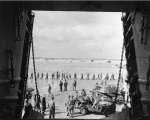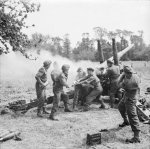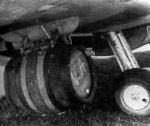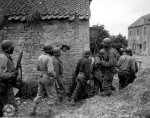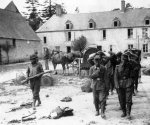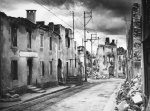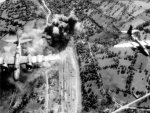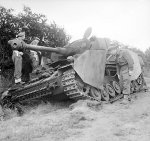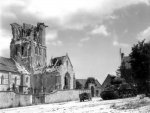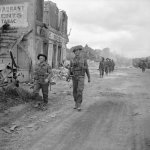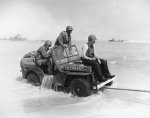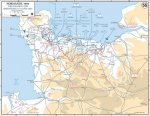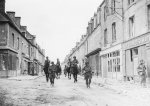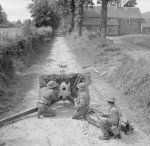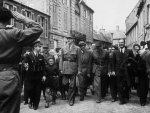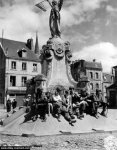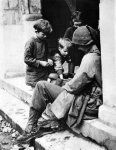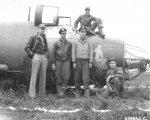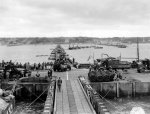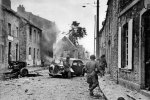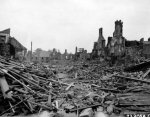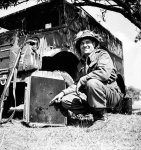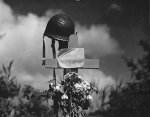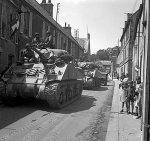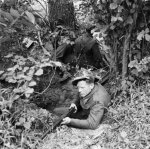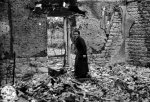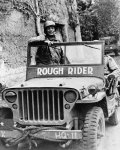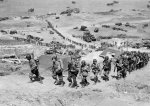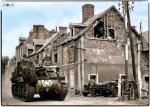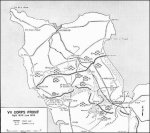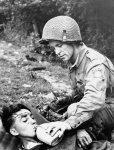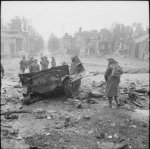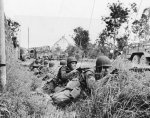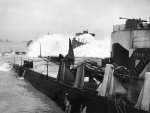June 13, 1944: It’s Tuesday - today is D+7, marking 1 week (7 days) since the D-Day Invasion at Normandy and the beginning of the liberation of Europe.
The 502nd and 506th regiments of the 101st Airborne Division manage to liberate the totality of Carentan. To the southwest, the American 175th Infantry Division must control the high ground above the road connecting Bayeux to Saint-Lô - its units are pinned there by mortars and shootings of heavy machine guns which slow down their progression. The battleship Texas shells the area with its 16-inch batteries without hitting the task force. The American 90th Infantry Division liberates the locality of Pont-L’Abbe, while at the edge of the American and the British sectors, the soldiers of the US 1st Infantry Division liberate the village of Caumont where the Americans fight the 2nd German SS Panzer Division.
On the British front, the battlefield sees a short lull. Montgomery uses this to reinforce his positions and he slows down the progression of his troops to the North of Caen (which is still not under Allied control). The "Desert Rats" (7th English Armored Division) are attacked close to Villers-Bocage by the heavy tanks led by Michael Wittman. The British losses are so high that they abandon Villers-Bocage and retreat to the north.
The Germans, benefiting from this victory, counter-attack in direction of Tilly-on-Seulles and of Lingevres. But the British of the 49th and 50th infantry divisions fight back hard and the German armored tanks of the Panzer Lehr Division are scattered. The counter-attack is transformed into an organized retreat, but Caen is still not captured and it seems that many days of intense fightings will be necessary for its liberation.
Overnight, the Germans launch the first V-1 Flying Bomb (rocket) attack on England - only four of the ten bombs actually hit their targets.
Over France, US 8th Air Force attacks airfields with 128 bombers in first mission and 208 bombers in second mission. US 8th Air Force fighters conduct ground attacks and escort missions. US 9th Air Force attacks targets with 397 bombers while fighters conduct ground attacks, escort missions, and offensive patrols.
Over Germany, US 15th Air Force attacks Innsbruck after being forced to abort missions over Munich.
In Italy, British 8th Army captures Bagnoregio and Narni, and continues pushing toward Orvieto and Terni. US 5th Army makes little northward progress. US 12th Air Force aircraft attack multiple targets in support of Allied ground offensive and attack shipping at Livorno. US 15th Air Force attacks Porto Marghera.
Pictured: Jeep bringing casualties to a LST for evacuation, Utah Beach, Normandy, France, June 13, 1944; note line of German POWs; British 4.5 inch gun and crew of 211 Battery, 64th Medium Regiment, Royal Artillery in action near Tilly-sur-Seulles, France, June 13, 1944; Wrecked German Tiger I heavy tank, Viller-Bocage, France; The first aerial delivery of beer during the Battle of Normandy was conducted on June 13, 1944 through two 45 gallons tanks carried under the wings of the Spitfire Mk IXb belonging to 412 Squadron (126 Wing) on the occasion of their arrival at the B-4 airfield, Bény-sur-Mer, Calvados. A total of 270 gallons of beer were transported that day.
